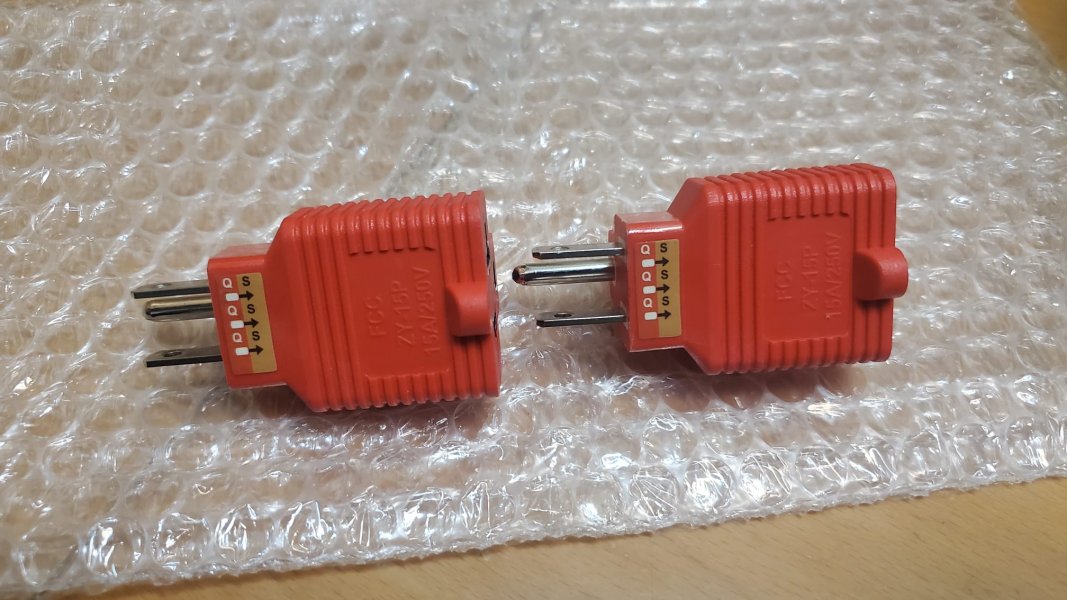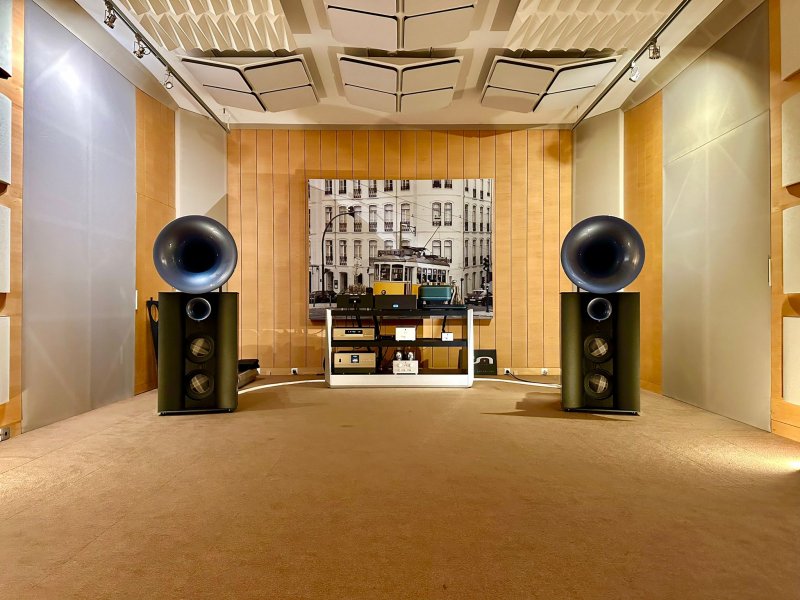I have now played music for about 300 hours on a pair of Ultimatum Infinity speaker cables. Prior to that, Anas told me they had, at most, five days of low wattage burn-in. These cables are replacing a pair of Gamma Infinity speaker cables.
First, a little background on my system. For years, my system’s strengths have been transparency, transient fidelity, speed, imaging, layering, retrieval of small ambient cues, and overall timing precision. More recently, I have sought greater tonal density, weight, gravitas, richness, and muscularity. A number of component changes have helped with that: the Taiko Extreme, Sean Jacobs ARC6 DC4 power supply for my Chord DAVE, and Shunyata Everest among them.
My first batch of QSA cables, received in early 2023, made a number of transformative changes. Chief among these were additional clarity, realism and immediacy, beauty and refinement. They were better than my existing cables by a wide margin. More detail can be found in my reviews at
https://www.whatsbestforum.com/threads/qsa-lanedri-series.36078/post-856048 and
https://www.whatsbestforum.com/threads/qsa-lanedri-series.36078/post-856049. The greatest impact was delivered by a pair of Gamma Infinity speaker cables. That, combined with the many stellar reviews of the Ultimatum speaker cables, made me think that moving up the speaker cable line would deliver another large impact.
I wasn’t wrong.
But I will say that the impact is qualitatively different than other QSA Lanedri cables. The first thing I always noticed with other QSA cables is the sheer amount of clarity, detail, and transparency that comes through. Familiar music is transformed because you are hearing musical lines, a sense of space, and vocal details that you’ve never heard before. Of course that’s not the only change — there are many across-the-board changes for the better. But the clarity is bracing. That was certainly true of my most recent QSA Lanedri cable purchases, two very modest looking DC extension cables that increased clarity even more (see reviews at posts #462, #506, and #510 in this thread).
So what is different about the Ultimatum Infinity speaker cables? As others have noted, the first thing you notice is how much bigger the music sounds. In the first listening session, the day the cables arrived after a long journey from Hong Kong, I was floored by how weighty and realistic solo piano sounded. The harmonic richness in piano overtones was incredible. By the way, these cables were very listenable right out of the box. Sure, during those early days top end extension is missing and there is a lack of refinement. Gains in transparency and focus are not yet apparent. But what is noticeable immediately is that the cables lowered my system’s tonal center of gravity. They have gotten better and better over the last two to three weeks.
For me, these cables do two things that no other component has been able to do. First is the
ease of presentation. We’ve all experienced moments when our systems have caused our bodies to react negatively. It might be a tightening of the jaw or a little cringe or stiffening of the body or something you don’t even notice until it has passed. Whatever it is, the result is that the body begins to shut down and you lose touch with the essence of the music. The causes are myriad: maybe it's a loud dynamic swing, maybe it’s some harsh high frequency content, or maybe it’s massed strings that don’t sound natural. The body knows before the mind knows. Typically I’m reaching for the volume control when this happens. Those moments are happening much less frequently now. I am hardly the first to recognize that these cables let the music flow easily into your listening space. As
@hols said long ago: “The most significant quality that comes out is the sense of ease . . ."
Over those first few days, I became conscious that my body was consistently relaxed — the music just washed over me without any physical barriers. The fact that dynamic swings were more dramatic didn’t seem to matter. Music with lots of high frequency content did not change the equation. Even poor recordings lost a good bit of their ability to annoy me (though they were of course still recognizable as poor recordings).
Clement Perry’s insightful review of these cables in Stereo Times contained this observation, which I found curious before I put these cables in my system, but which makes perfect sense to me now: “You feel as though you’re not turning up the volume as much as you’re turning up the musicians.” Yep. It’s that sense of ease that makes you forget you are dealing with the mechanical reproduction of music because the presentation is so natural and uncompressed. I can only assume that part of this is because distortions have been removed and the noise floor is lower.
Speaking of volume, I can play big orchestral showpieces with some assurance that my desire to turn it up won’t come with a penalty. Conversely, I can listen at low levels to complex music and feel like I’m hearing real substance — the weight comes through. An example: Shostakovich's 10th symphony, third movement, contains some passages where the bass drum is basically playing alone, lightly tapping quarter notes at a p or pp level. Even at low volume levels, this passage, which has kind of disappeared on me before, can be heard clearly. Better than that: you can hear the pitch of the bass drum and hear how its sound is being transmitted through the glorious acoustic of Symphony Hall, Boston.
The second thing these cables do is
transform the tonal density of your system. You can call it tonal saturation, weight, gravitas, timbral richness, or putting more meat on the bones, but it is unmistakable. No other component, let alone a cable, has achieved this, to this degree, in my system. As noted above, I’ve been searching for more of this and I feel like a milestone has been reached. In his comments on the Ultimatum speaker cables,
@flkin observed that the QSA “house sound” is “thicker and meatier.” He then makes the following observation, which mirrors my experience: "For those with thin sounding system this is a major correction. For those with normal density systems initially it comes across as fatter sounding but over time as the burn continues, the separation of voices, instruments are very clear and with the soundstage developing properly, placed in the correct positions. Mids, upper mids and treble are all thicker and with that more real sounding.” I would just add that the tonal density I am hearing now with the Ultimatum Infinity speaker cables is much more dramatic than the density improvements I have heard with other QSA cables. I suspect that the Spectra Infinity power cords would produce more density than my Gamma Revelation power cords, and the Ultimatum power cords are likely on a completely different level.
I’m finding some instruments benefit greatly from the added weight. The left hand on solo piano can be thrilling. Percussive piano has tremendous impact and heft. Double basses in the orchestra provide greater foundation. The lower registers of tenor sax or trumpet are so rich. So there is a more bottom-up sound to my system now but not at the expense of a beautiful midrange. Indeed, there are density increases across the entire frequency spectrum. Thus, well recorded cymbals sound weighty and metallic and are beautifully differentiated from one another. Gone is the whitish sound you sometimes hear even on decent recordings.
Tonal saturation also helps vocals sound more realistic and in the room. Choral music is heavenly. Eventually you notice that overall transparency has improved. With so many orchestras abandoning the studio and recording live in their home concert halls, I’m also noticing more differences from hall to hall.
I’m highlighting ease of presentation and tonal density because these are the factors that have transformed my system. Looking at my notes, there are other areas that have improved beyond the aforementioned clarity and transparency. Dynamics are bigger and more free flowing. Orchestral climaxes are bigger in terms of impact and heft — without pain. Complex big band music — the Maria Schneider Orchestra comes to mind — is presented with great separation of musical lines despite greater tonal saturation. I attend a lot of classical concerts, both chamber music and orchestral, and I feel that instrumental timbre and color are spot on.
These cables are expensive and the value question is subjective (to a large degree). It seems a little crazy to spend this kind of money on cables of any kind. I will only say that I’ve been on a quest to change the presentation and sound of my system into something that can induce physical receptiveness and relaxation, mindful attentiveness, and emotional engagement. These cables go a long way towards ticking each of those boxes. As I sit here listening to Oliver Nelson’s classic album The Blues and the Abstract Truth, I am getting the big, beautiful tone that I crave. Well done QSA Lanedri!
 www.whatsbestforum.com
www.whatsbestforum.com

 www.whatsbestforum.com
www.whatsbestforum.com
 www.qsa-lanedri.com
www.qsa-lanedri.com

 www.qsa-lanedri.com
www.qsa-lanedri.com




